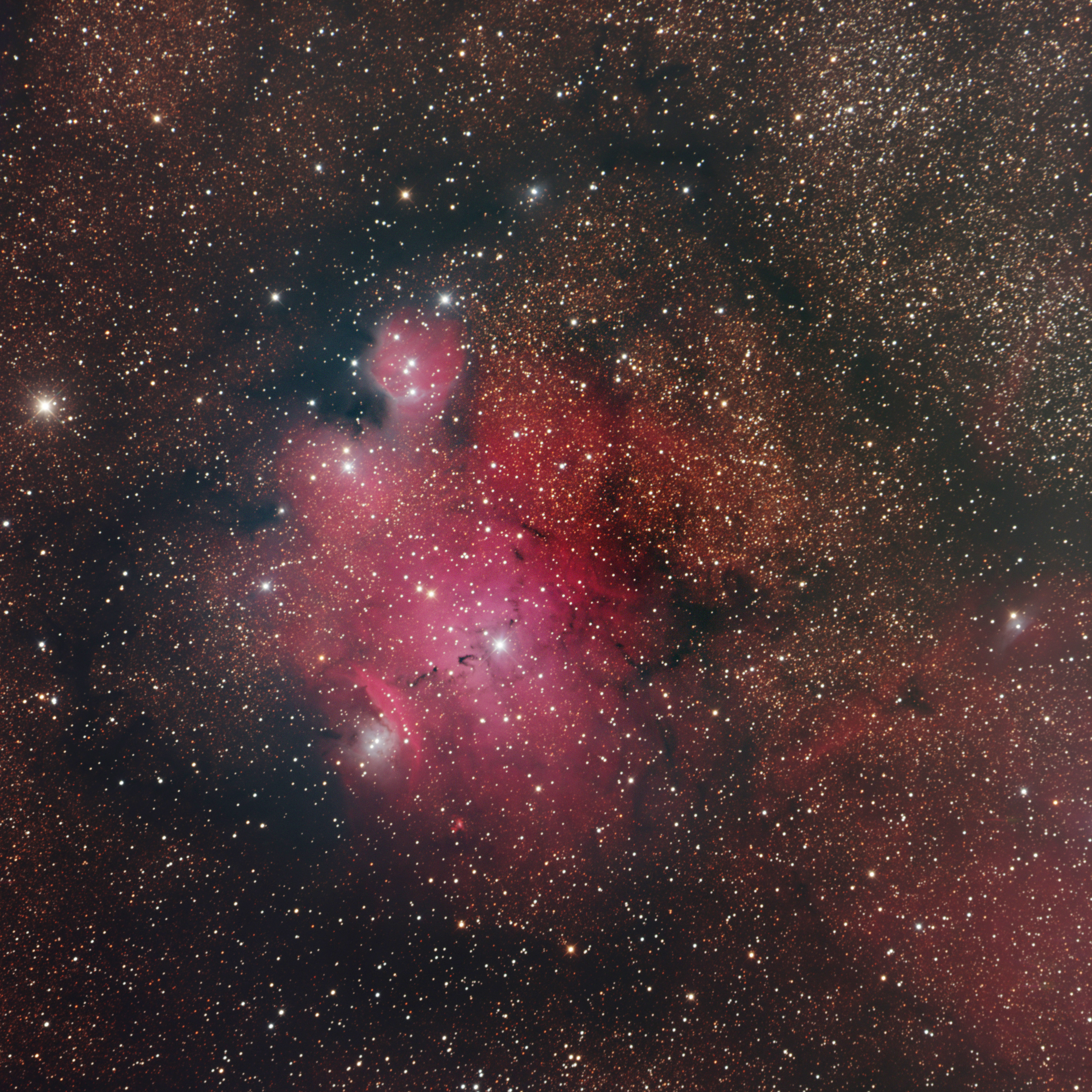With the advent of the 1950s, two new telescopes had come online, the famous 200″ Hale Telescope, and it’s important partner, the Samuel Oschin 48″ Schmidt Camera. That telescope had a very wide field of view, and was used to create the first ever complete photographic survey of the northern hemisphere sky. A twin was used to complete the survey for the southern hemisphere, and for the first time, astronomers had a view of the whole sky. The revolution had started.

In 1953, and again in 1959, an astronomer named Stewart Sharpless went through every single image from what was then called the Palomar Observatory Sky Survey, looking for glowing clouds of Hydrogen that had been missed by earlier astronomers. He found 312 of them, and his catalog of these objects is used by astrophotographers to this day to find beautiful and less-often photographed objects..
SH2-29 is typical of these Hydrogen clouds. Stars are forming here, and as their nuclear fusion processes begin, they bathe the area in their light. The ultraviolet light they shed causes the Hydrogen to fluoresce, and their visible light illuminates the dust around them, creating reflection nebulae. Dark, sinuous lanes of dense dust cross the area, which is framed by enormous amounts of obscuring dust.
This dust contains the basic building blocks of life: compounds of Carbon, Hydrogen, and Oxygen. Many such molecules have been detected in clouds like this, everything from simple water and methane to sugar complexes. There’s a relatively exhaustive list of the compounds discovered to date on Wikipedia. In one way or another, all of these molecules are part of our daily existence. Their existence in places like this offer yet another testament to the fact that “We are made of star stuff.”
So, while this picture is perhaps not eye-poppingly spectacular, in it we see ourselves, as things were maybe four billion years ago. People ask me all the time if I think there is life elsewhere in the universe. To them I answer “It seems likely.”